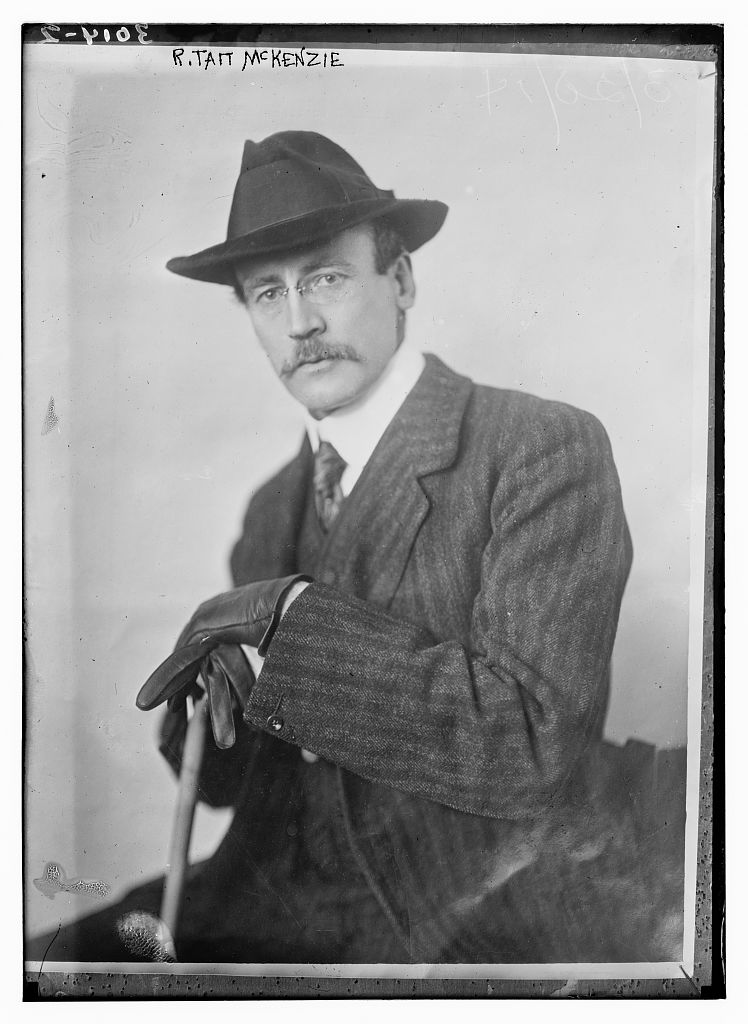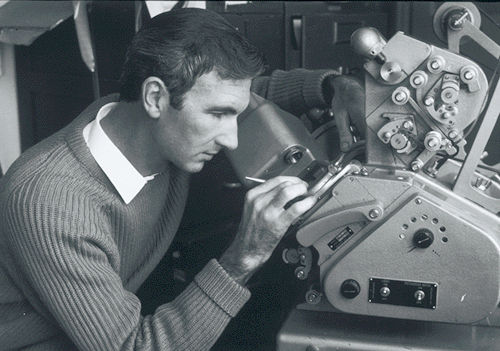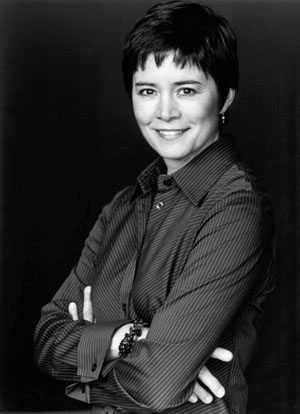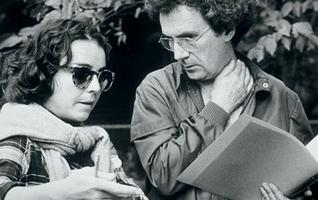
While lesbian, gay, bisexual and transgender (LGBT) Canadians have always been engaged in artistic discourse, it was only in the 1960s and 1970s that queer culture was openly portrayed in ways that directly challenged the mainstream establishment. Ever since, queer artists have played an integral role in the movement for LGBT rights in Canada, and today continue to challenge not only homophobia but also colonialism, racism and sexism. In doing so, they have contributed both to an expanding international artistic discourse as well as to a more focused political discourse on sexuality and Canadian identity.
Just how did a Greek god become a beacon for gay men in the Prairies? In this episode, Falen and Leah look into some of earliest known queer spaces in the Prairies, how they came to be and why they were so important. If you don't think of Winnipeg as a queer city, this episode may just change your mind.Note: The Secret Life of Canada is hosted and written by Falen Johnson and Leah Simone Bowen and is a CBC original podcast independent of The Canadian Encyclopedia.
Beginnings
Throughout the early 20th century, homoerotic subject matter was conveyed in the works of a handful of painters, sculptors and photographers — some of whom engaged in same-sex partnerships, and some of whom did not. By and large, these artists emerged from the anglophone upper-middle class, and in many ways the genteel character of their portraits (often nudes) was reflective of their affiliation with the cultural elite. Nonetheless, many of these works also demonstrate an intimacy and suggestion of sexual desire that was not typically found in the mainstream artistic establishment.
Among the earliest professional artists in this vein was American-born Florence Wyle and her Canadian partner Frances Loring. After meeting at the Art Institute of Chicago and living briefly in New York City, Wyle and Loring moved to Toronto in 1913, where they both became fixtures of the professional art scene. In 1928, they established the Sculptors’ Society of Canada. Both artists gained high-profile commissions throughout their careers, including Wyle’s bronze statues of factory workers for the Canadian war memorials. The female body was a central focus in both of their works, which was rendered in a variety of ways, ranging from Loring’s Inuit Mother and Child (1958) to Wyle’s more erotic Sun Worshipper (1916) and Torso (1932).
Another couple of this era whose work gained mainstream recognition while they remained officially closeted was photographer Edith Watson and journalist Victoria Hayward. While both were born abroad — Watson in Connecticut and Hayward in Bermuda — after meeting in 1911, the couple moved to Canada where they worked together for several years. Focusing on the Canadian landscape, Watson had several photographs published in The New York Times, the Toronto Star, Maclean’s and Saturday Night. They also jointly published a number of magazine articles, in addition to a book of photography entitled Romantic Canada in 1922. Other notable lesbian artists of this period include portraitist Florence Carlyle (1864–1923) as well as photographer Clara Slipprell (1885–1975), both of whom were born in Canada but spent the bulk of their careers in the United States.
Queer art of this period cannot be seen as a stable category of work produced solely by gays and lesbians. The work of Robert Tait McKenzie provides one case study. A married doctor and educator based at McGill University, Tait produced several bronze statues of statesmen, athletes and soldiers — including The Victor (1925) and The Ideal Scout (1915). It was his interest in anatomy that led him to sculpture, and, as art historian Eugenio Filice writes, his meticulously realistic bronze statue The Sprinter (1902) demonstrates an “undeniably homoerotic” sensibility.

The dual currents of homophobia and a fixation on masculinity persisted throughout the mid-20th century, perhaps reaching a zenith in the 1950s and early 1960s. Extravagantly muscular male bodies had by then become the object of fascination and admiration in mainstream comic books, while at the same time, gay men were portrayed by political elites as a fundamental threat to Canadian society.
These competing forms of gender identity and sexual oppression are reflected in the career of Peter Flinsch, among many others. Flinsch was born in Leipzig, Germany. During the Second World War, he was court-martialed after he was caught kissing another man during his service in the German military. In 1953, he moved to Vancouver, where he began working in set design for CBC Television. He painted and sketched privately throughout his time at the CBC, but kept his work (mostly erotic male nudes) hidden from public view until his retirement in 1985. In the final 25 years of his life, however, Flinsch both came out of the closet and gained substantial recognition for his work.
Queer Lit in Canada
The trajectory of queer Canadian literature has largely paralleled that of the visual arts: closeted gay and lesbian writers had been contributing to the artistic discourse for several years prior to the sexual revolution, and many of them came from families of uncommon privilege.
Among the first figures in Canadian history to have lived as an openly gay man was journalist and art gallery owner Robbie Ross (1869–1918), the grandson of Robert Baldwin. As Oscar Wilde’s lover, and later executor of his estate, Ross lived in a uniquely privileged atmosphere — although his career was by no means immune to scandal and prejudice. Having lived almost his entire life in England, he scarcely made an impression on the Canadian cultural landscape.
Until the late 20th century, the homophobia of the literary establishment stifled artistic expression. In 1943, for example, the writer John Sutherland accused poet Patrick Anderson of writing about “some sexual experience of a kind not normal.” Anderson vehemently repudiated the accusation, and Sutherland soon retracted it. Although Anderson did come out as gay several years later — upon returning to his home country of Britain — the episode reflects the repressive atmosphere of the Canadian literary scene at the time.
While some gay and lesbian writers of Canadian heritage — such as Brion Gysin — avoided Canada in favour of the more permissive European cultural landscape, there were also several Americans — including Robin Blaser and George Stanley — who moved to Canada in the 1960s and 1970s as the queer literary scene began to emerge. The profusion of queer Canadian literature since that period has been immense in its scope. Several writers — including Jovette Marchessault, Timothy Findley, Ann-Marie MacDonald and David Rakoff — have gained major international recognition for their writings on both queer and Canadian identity.
Film and the Sexual Revolution
The sexual revolution of the 1960s marked a definitive shift from the previous milieu, which was characterized by a pervasive homophobia that forced gays and lesbians into the closet and excluded them from the mainstream art world — as well as other social and professional spheres. As the movement for LGBT rights gained momentum, gay and lesbian artists began to convey their own sexual politics more directly by engaging with contemporary debates on shifting gender norms. While photography, painting, installation art, and sculpture continued to be important, film and theatre played an even more confrontational role. In many cases, these forms elicited charges of obscenity, censorship and scandal.
The National Film Board (NFB) was essential in the production and promotion of many films dealing with queer subject matter. Though the NFB had been accused of promoting radical and subversive material in the immediate post-war years, it nonetheless had a legal mandate that protected it from direct government interference.

Among the most influential Canadian filmmakers in the mid-20th century was Norman McLaren, a Scottish-born animator who began working at the NFB in 1941. Like Flinsch, both McLaren and his partner, Guy Glover — who throughout his 35-year career at the NFB produced approximately 290 films — remained officially closeted until their later years. Nonetheless, some of their films directly parodied North American heterosexual culture. Perhaps the most overt of these was McLaren’s Academy-award winning short Neighbours (1952), which portrays two straight-laced family men fighting violently over a flower that grows on the border of their respective properties. Indeed, hints of a queer critique can even be found in some of the NFB’s more straightforwardly nationalist wartime material.
In the mid-1960s, some of the NFB’s productions began to engage queer sexuality with increasing candour. Among these were David Secter’s critically acclaimed 1965 film Winter Kept Us Warm, a melodrama about two freshmen at the University of Toronto whose friendship becomes fraught with unrequited desire. Racy sexual subject matter grew rapidly in subsequent years, as films such as Jean-Pierre Lefebvre's Jusqu’au Coeur, Robin Spry’s Prologue and Claude Jutra's Wow entered theatres. While homosexual themes were sometimes made more implicit than explicit in these films, they nonetheless featured such “queer goings-on” as premarital sex, adultery, drugs, and abortion.
Montréal was a flashpoint of cultural antagonisms, as the heated politics of the Quiet Revolution dovetailed with the sexual-revolutionary politics of queer groups resisting bathhouse raids and other violent “vice cleanups” by the police. Some of these tensions are reflected in the work of Michel Tremblay, whose 1967 play Hosanna plunged audiences into the world of gays, lesbians, burlesque houses and drag queens on lower St-Laurent St. Seven years later, Hosanna was staged on Broadway. The play was additionally incorporated into André Brassard’s film Il était une fois dans l’Est (tr. Once Upon a Time in the East).
Queer Art Comes of Age
By the late 1970s, a distinct gay and lesbian art scene was developing in
Among the most popular gay-themed films of the decade emerged in 1977, with the release of Toronto-based director Richard Benner’s Outrageous! Depicting a frustrated hairdresser and part-time drag queen singer and his mentally-ill female roommate, Outrageous! captured the complex personal experiences of LGBT urban life by playing between upbeat musical sequences and melancholic drama. The film gained one of the widest distributions of any 1970s film about queer gender identity.
Art and Activism
As in Montréal, the escalation of police harassment and persecution of the gay community in
Throughout the 1980s and early 1990s, avant-garde Canadian art was inextricably linked to the queer scene. Toronto-based visual artists Tim Jocelyn and Charles Pachter both brought a cheeky and subversive approach to themes of national identity through their appropriations of stereotypical Canadian iconography. Vancouver’s Kiss & Tell collective — consisting of Persimmon Blackbridge, Lizard Jones and Susan Stewart — approached themes of lesbian sexuality and S&M in their 1990 photo exhibit Drawing the Line. Winnipeg artists Shawna Dempsey and Lorri Millan (who often work under the moniker Lesbian Park Rangers) also played on themes of lesbian identity and lesbian stereotypes in their videos We’re Talking Vulva (1990) and A Day in the Life of a Bull-Dyke (1995). Other important players included filmmaker Lynne Fernie (director of the 1992 film Forbidden Love); multimedia artist Paul Wong (whose 1984 film Confused: Sexual Views caused a stir when it was rejected by the Vancouver Art Gallery on the basis that it was “not art”); artists connected to the Pleasure Dome collective such as Bruce LaBruce and Steve Reinke, and many others.
The AIDS Crisis
The onset of the AIDS crisis in the 1980s marked a definitive shift in the history of queer liberation in Canada. As the gay liberation movement by necessity became more confrontational, so too did queer art. As the crisis escalated, several video artists dealt candidly and forcefully with the impact of the disease on the community, mobilizing a growing critique of the ways in which homophobia exacerbated the epidemic.
John Greyson's 1994 musical Zero Patience challenged the myths surrounding Québécois flight attendant Gaëtan Dugas (the so-called “patient zero” of HIV-AIDS) by parodying the Victorian attitudes towards AIDS being conveyed by mainstream media. Mike Hoolboom’s 1993 film Frank’s Cock, also a critical success, took a more personal perspective on the crisis by featuring a voiceover from an unnamed narrator concerned for the life of his lover who has been diagnosed with HIV. Another prominent Toronto director, Richard Fung, explored the racial dimensions of gay identity and the AIDS crisis by depicting the lives of four Asian Canadian men struggling with the disease in his 1990 documentary Fighting Chance. Tim Jocelyn’s partner Andy Fabo also confronted the crisis through his paintings as well as his 1988 video Survival of the Delirious.
While some critics heralded this profuse artistic output as marking some sort of golden age of gay art, it was seldom understood as such by members of the community itself. Writing in 1992, Greyson stated, “Many well-meaning souls […] have claimed that the AIDS crisis is resulting in a cultural renaissance — that old ‘great art is born of suffering’ line. Well, thanks but no thanks. Concepts of ‘great art’ ultimately benefit only those collectors who want hefty returns on their investments, rarely the communities that originate such production. Renaissances are usually identified after the fact, claimed by bystanders who have achieved a safe, contemplative distance. The romance of suffering is affordable only to the bourgeoisie, who vicariously consume it, but by definition never do it.”
Recent Developments
By the mid-1990s, the gay and lesbian art scene had been strengthened by the establishment of such artistic institutions as Toronto’s Inside Out Film and Video Festival, as well as Xtra magazine and such bookstores as Glad Day Bookshop and Vancouver’s Little Sister’s Book & Art Emporium. Also of tremendous importance was the influence the movement exerted on mainstream artists — such as the comedy troupe Kids in the Hall, whose sketches frequently involved playful subversions of traditional gender norms.
Following a series of landmark legal victories — including the 2005 accommodation of same-sex marriage — and the receding rates of HIV death and infection, the themes dominating queer Canadian art have, in many ways, become more diverse in the 21st century. Nonetheless, the questions of race, class and body image discussed by 1980s artists such as Greyson and Fung continue to be central themes.
Another key figure in the contemporary scene is Kent Monkman, a Toronto-based artist of Cree and Irish ancestry whose work involves queer parodies of the cowboys-and-Indians motif. Often featuring Monkman’s drag queen alter-ego “Miss Chief Eagle Testickle,” his installations and videos incorporate dance music, kitschy stock footage, and his own performances in ways that both interrogate and celebrate the concept of two-spiritedness.
Throughout the bumpy and ongoing history of LGBT liberation in Canada, queer artists have constantly engaged with the struggle in ways that were highly provocative and extremely contemporary — often referencing ongoing political events within their statements of satire and dissent. With the liberalization of sexual freedoms in Canada, new debates on sexuality and the body have arisen — both within and without the queer community — which continue to motivate new artistic discourses and point to the universal relevance of queer art in the 21st century.
As Pride celebrations kick off across the country, Leah and Falen shout out the Gay Asians of Toronto (GAT). Formed in 1979, this organization is thought to be the first LGBT group for non-white queer people in Canada.Note: The Secret Life of Canada is hosted and written by Falen Johnson and Leah Simone Bowen and is a CBC original podcast independent of The Canadian Encyclopedia.

 Share on Facebook
Share on Facebook Share on X
Share on X Share by Email
Share by Email Share on Google Classroom
Share on Google Classroom








